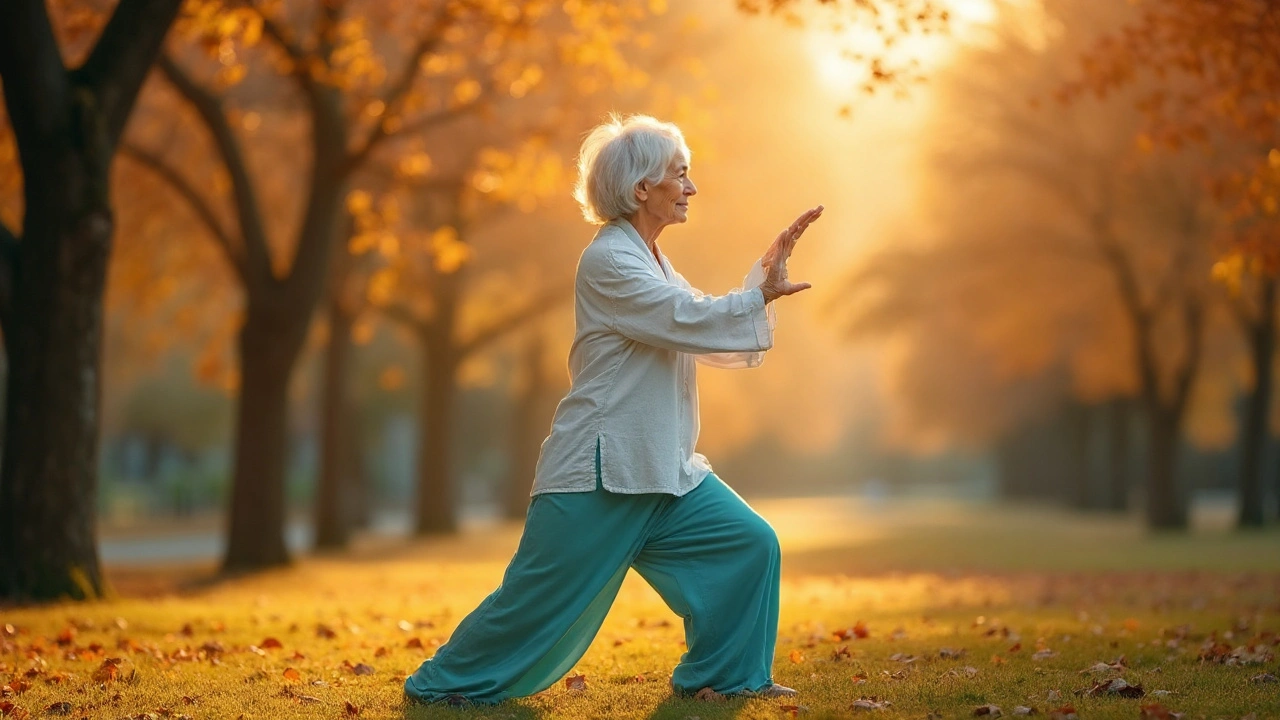
How Tai Chi Helps Osteoporosis Patients Boost Bone Health and Prevent Falls
Discover how Tai Chi improves bone density, balance, and overall health for osteoporosis patients. Learn the science, practical tips, and comparisons with other exercises.
Ever had a scare from a slip or a near‑miss on the stairs? You’re not alone. Falls are one of the top reasons seniors end up in the ER, but most of them can be avoided with a few practical tweaks. Below you’ll find down‑to‑earth advice you can start using today—no fancy equipment or pricey home remodel needed.
The first place to look is your own floor plan. Walk through each room and ask yourself: "What could trip me?" Loose rugs, cluttered walkways, and cords snaking across the floor are the usual suspects. Secure rugs with non‑slip backing or double‑sided tape, and keep cords tucked behind furniture. If a rug has to stay, use a rug pad—it's cheap and can save a lot of bruises.
Lighting is another hidden danger. Dim hallways make even a small step feel like a mountain. Swap out old bulbs for brighter LEDs and add night‑lights by the bathroom and bedroom doors. For stairs, install sturdy handrails on both sides if you can; if not, at least a single rail at the side you use most. A simple grab bar in the shower or next to the toilet can be a game‑changer.
Good balance isn’t just about not tripping; it’s about keeping your body steady when you do. A few minutes a day of balance exercises can make a huge difference. Try standing on one foot while brushing your teeth—hold onto a counter if you need support. Switch legs after 30 seconds. Over time, you’ll notice you’re steadier on uneven ground.
Strength matters too. Simple chair squats—standing up from a chair without using your hands—work your legs and hips. Do two sets of ten each day. If you have a sturdy table, practice gentle lunges, keeping your knee behind your toe. These moves build the muscles that protect you when you stumble.
Don’t forget footwear. Shoes with a firm sole and a good grip are worth the small expense. Avoid fluffy slippers or shoes with slick soles, especially on tile or hardwood floors. If you’re outside, choose shoes with tread that handles wet pavement, and consider a waterproof layer in winter.
Medication review is another often‑overlooked step. Some prescriptions can cause dizziness or lower blood pressure. Talk to your doctor or pharmacist about any side effects you notice, especially after a new med is added. Sometimes a tiny dosage tweak can clear up that woozy feeling.
Vision checks are key, too. Even a slight change in eyesight can throw off depth perception. Make sure you have the right glasses for reading and for distance, and keep lenses clean. An annual eye exam can spot problems before they lead to a fall.
Putting these ideas together creates a safety net that’s hard to break. Scan your home, add a few light fixtures, practice balance moves, and keep your meds and eyes in check. The effort you put in now saves a lot of pain, doctor visits, and worry later on.
Ready to start? Pick one room this week, clear the clutter, and try a set of chair squats before dinner. Small steps add up, and before long you’ll feel steadier, safer, and more confident moving around your own space.

Discover how Tai Chi improves bone density, balance, and overall health for osteoporosis patients. Learn the science, practical tips, and comparisons with other exercises.